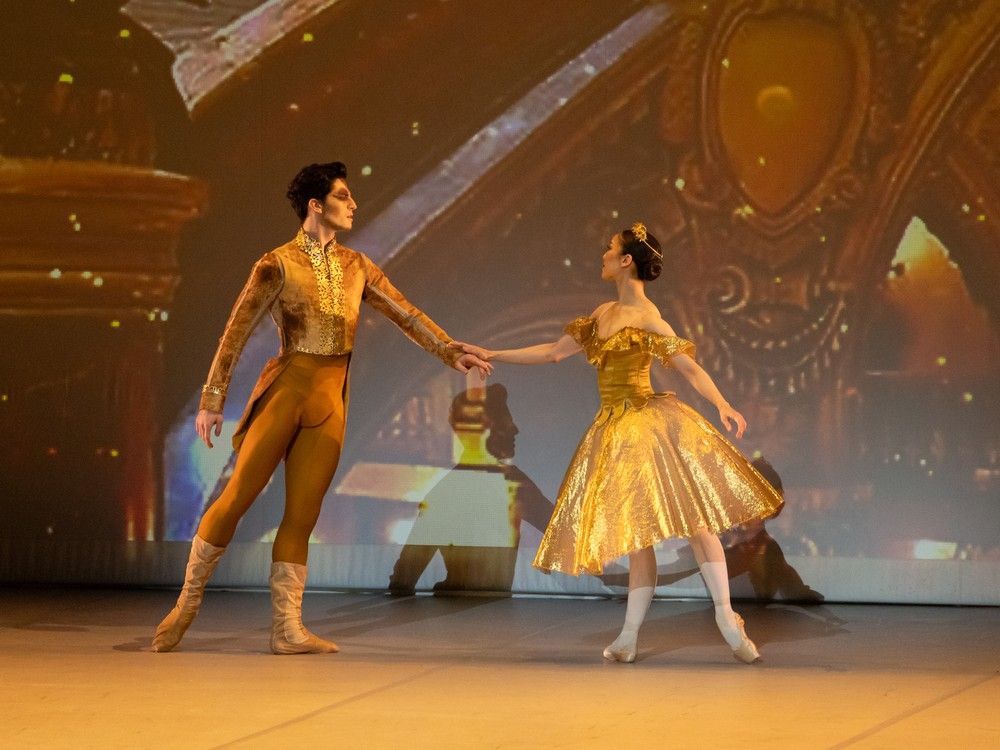‘It takes me back’: How VR is helping some N.W.T. elders reconnect with tradition
The drumming and chanting of hand games is a familiar sound for Noel Drybones.
But on this October day, there’s no tournament in town. The sounds are coming from a set of virtual reality (VR) goggles Drybones is wearing. When the 81-year-old removes the headset, he’s back in the quiet TV room of the seniors centre in Behchokǫ̀, N.W.T.
The headset is part of a VR project marrying modern technology with tradition. It allows elders, and others who struggle with mobility, to travel to the land without ever leaving home.
“It takes me back,” Drybones said. “Helps my memories.”
The Tłı̨chǫ Government started the project during the COVID-19 pandemic as a way of bringing the land to residents during lockdown. Users can put on the VR goggles and choose from a list of 10 locations including gravesites, the Whatı̀ falls, a drum dance or hide-tanning camp.
The project came to fruition this past summer and two headsets now live in the seniors home in Behchokǫ̀. Staff there say that connecting elders — some of whom are living with dementia or restricted physical mobility — with their culture sparks happy memories.
“This is a way to kind of help bring that back to them as best as we can so they don’t feel so much sense of loss from coming to live in a home,” said Sarah Power, a nurse at the home.
Tool to teach youth
Johnny Simpson, 66, hopes it can expand as a tool to help teach youth.
Simpson is also a resident at the Behchokǫ̀ home and used to work with the school in Whatı̀, N.W.T., taking students on the land.
In the headset, he travels to a fishing boat. He says it reminds him of taking students to pull fishing nets. He says it’s not as good as really being there, touching the fish and being on the water, but it could be a good way to share knowledge with a group — especially if the elder, or the students, aren’t able to travel.
“If I’m going to talk to the kids, they can see what we’re looking at in here,” Simpson said, pointing to the headset.
Paul Cressman, the project manager with the Tłı̨chǫ Government, said that’s an aspect of the technology they plan to explore.
He imagines workshops where students might be wearing the headset with an elder sitting beside them telling the story of that place and its significance.
He also talked about potential for environmental monitoring where VR technology is used to record sites, bring back the footage and have elders offer comments on how the environment has changed.
Cressman stressed that there is no substitute for actually being on the land.
“But it’s just a recognition that sometimes it’s not possible and so here are some alternative ways using technology to bring those experiences into the community,” he said.
‘Form of mental time travel’
Steve Lindsay, a psychology professor at the University of Victoria, studies cognitive psychology, or how the mind works.
He called the project a kind of memory therapy where the user is able to remember an earlier experience and bring themselves back to that time.
“A form of mental time travel,” he said.
He said it’s not likely for that to have lasting effects, especially for those experiencing age-related memory loss.
“But,” he said, “if you can enable people to have a nice time, that’s a good thing to do.”
Julia Naedzo, the facility coordinator at the Behchokǫ̀ home, said many of the elders don’t remember using the headset days after the fact but that it makes them happy when they do.
She says it also helps that the VR is in the Tłı̨chǫ language.
“I think it takes them back to when they were kids. And you see their smile and their laughter when we were showing it to them,” Naedzo said.
Drybones, the elder transported to hand games through the headset, said he likes it very much — especially the drumming.
“Everybody should be dancing,” he said, “why are you hanging around?”



